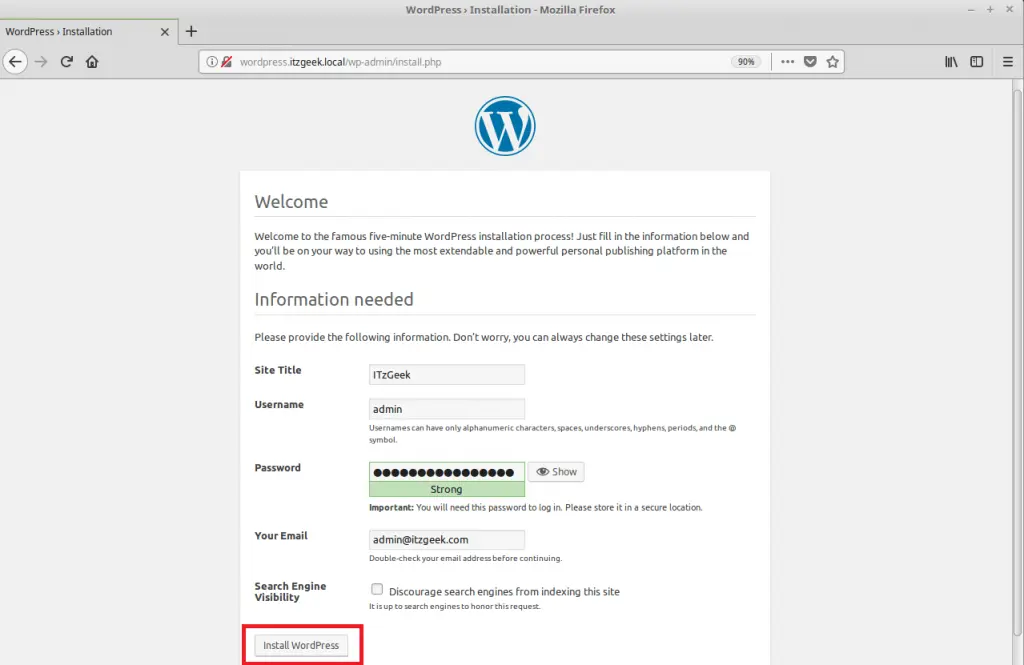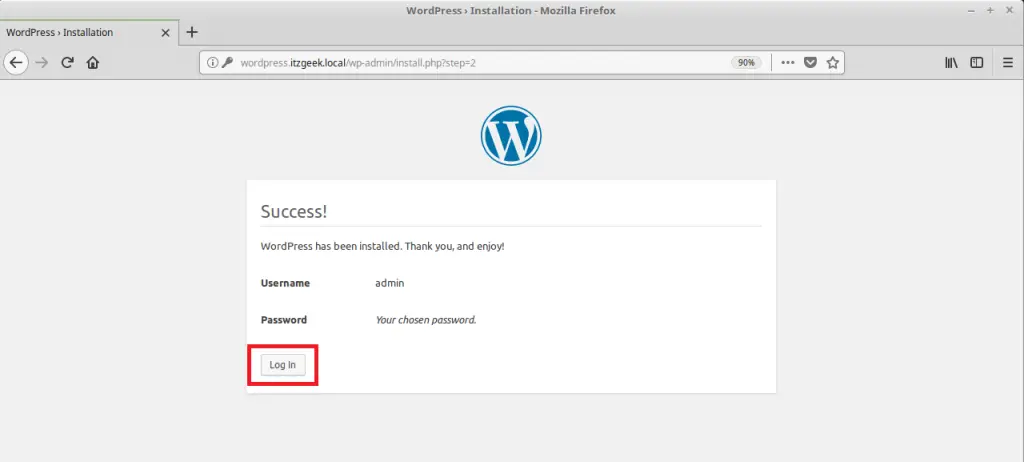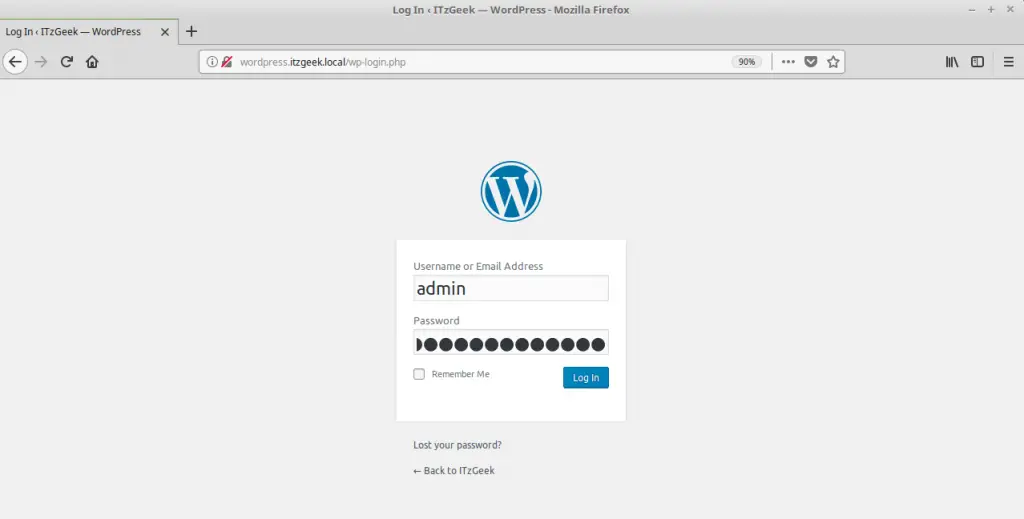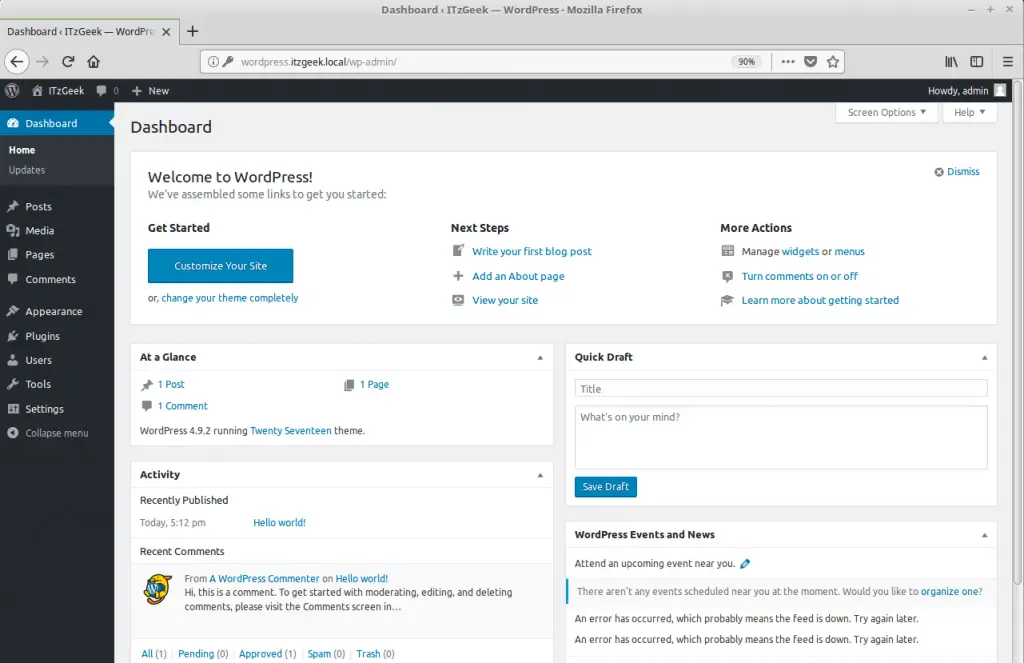Install WordPress with Nginx on CentOS 7 / RHEL 7
WordPress is the most widely used open source web blogging and content management software written in php and MySQL. Even ITzGeek uses WordPress.
Here is the small tutorial on setting up WordPress installation with Nginx on CentOS 7.
Prerequisites
Before proceeding, you might want to look at the following.
1: Install EMP stack (Nginx, MariaDB, and PHP) on CentOS 7 / RHEL 7
2: Install phpMyAdmin with Nginx on CentOS 7 / RHEL 7
3: Disable SELinux on CentOS 7 / RHEL 7
Configure Nginx Virtualhost
Let’s create a virtual host for WordPress installation, virtual host configuration files can be found in /etc/nginx/conf.d directory. Normally virtual host file contains a domain name, port number, document root, log location, fast CGI, etc, We have to keep that in mind before creating the file.
Assume the following,
Domain name : wordpress.itzgeek.local
Port No : 80
Document root: /usr/share/nginx/wordpress.itzgeek.local
Logs : /usr/share/nginx/wordpress.itzgeek.local/logs
Create a virtual host.
vi /etc/nginx/conf.d/wordpress.conf
Place the following content.
server {
listen 80;
server_name wordpress.itzgeek.local;
access_log /usr/share/nginx/wordpress.itzgeek.local/logs/access.log;
error_log /usr/share/nginx/wordpress.itzgeek.local/logs/error.log;
location / {
root /usr/share/nginx/wordpress.itzgeek.local;
index index.php index.html index.htm;
if (-f $request_filename) {
expires 30d;
break;
}
if (!-e $request_filename) {
rewrite ^(.+)$ /index.php?q=$1 last;
}
}
location ~ .php$ {
fastcgi_pass localhost:9000; # port where FastCGI processes were spawned
fastcgi_index index.php;
fastcgi_param SCRIPT_FILENAME /usr/share/nginx/wordpress.itzgeek.local$fastcgi_script_name; # same path as above
fastcgi_param PATH_INFO $fastcgi_script_name;
include /etc/nginx/fastcgi_params;
}
}
Create document root and logs directory.
mkdir /usr/share/nginx/wordpress.itzgeek.local mkdir /usr/share/nginx/wordpress.itzgeek.local/logs
Verify the configuration files.
nginx -t
If you get the following, it means that virtual host entries are correct.
nginx: the configuration file /etc/nginx/nginx.conf syntax is ok nginx: configuration file /etc/nginx/nginx.conf test is successful
Restart the services.
systemctl restart nginx systemctl restart php-fpm
If you get any errror while restarting the Nginx service, then disable SELinux on your machine.
setenforce 0
Create database
Login into MariaDB.
mysql -u root -p
Create the desired database for WordPress installation.
CREATE DATABASE wordpress;
Create a user.
CREATE USER 'wpuser'@'localhost' IDENTIFIED BY 'wppassword';
Grant the permission to the created user to access the newly created WordPress database.
GRANT ALL PRIVILEGES ON wordpress.* TO 'wpuser'@'localhost';
Exit from MariaDB shell.
exit
Configure WordPress
Download the latest WordPress.
wget https://wordpress.org/latest.tar.gz
Extract it.
tar -zxvf latest.tar.gz
Move it to our document root.
mv wordpress/* /usr/share/nginx/wordpress.itzgeek.local
Copy the wp-sample-config.php file and make it as wp-config.php file.
cp /usr/share/nginx/wordpress.itzgeek.local/wp-config-sample.php /usr/share/nginx/wordpress.itzgeek.local/wp-config.php
Edit the config file and mention the database information.
vi /usr/share/nginx/wordpress.itzgeek.local/wp-config.php
The default configuration will look like below.
// ** MySQL settings - You can get this info from your web host ** //
/** The name of the database for WordPress */
define('DB_NAME', 'database_name_here');
/** MySQL database username */
define('DB_USER', 'username_here');
/** MySQL database password */
define('DB_PASSWORD', 'password_here');
/** MySQL hostname */
define('DB_HOST', 'localhost');
Modified entries according to the created database user and database will look like this.
// ** MySQL settings - You can get this info from your web host ** //
/** The name of the database for WordPress */
define('DB_NAME', 'wordpress');
/** MySQL database username */
define('DB_USER', 'wpuser');
/** MySQL database password */
define('DB_PASSWORD', 'wppassword');
/** MySQL hostname */
define('DB_HOST', 'localhost');
Make nginx user as the owner of WordPress directory.
chown -R nginx:nginx /usr/share/nginx/wordpress.itzgeek.local/
Install WordPress
Open your browser and visit
OR
Enter the site information and click on Install WordPress.

You will see the next page like below.

If you click on continue, you will be asked to enter the password to access the WordPress admin section.

WordPress Admin Dashboard:

That’s All.
